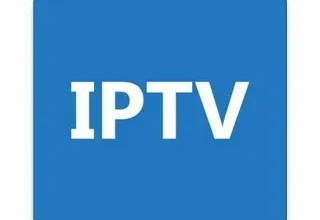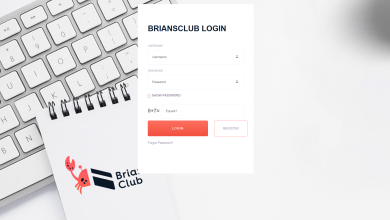In the fast-paced world of business, success often hinges on efficiency. To achieve success, companies must be agile and responsive to changing needs. One area where efficiency plays a critical role is in staffing. The right employees can make or break a company’s success, and finding and managing the right talent can be a daunting task. That’s where staffing software comes into play.
Staffing software is a powerful tool that can help streamline the entire staffing process, from recruitment and onboarding to employee management and payroll. This guide will explore the world of staffing software, its benefits, and how to choose the best one for your business.
What is Staffing Software?
Before we dive into the nitty-gritty of staffing software, let’s start with the basics. Staffing software is a specialized type of software designed to assist companies in managing their workforce. It covers a wide range of functions, including:
- Recruitment: Attracting and hiring the right talent for your organization.
- Onboarding: Getting new employees up to speed and integrated into the company.
- Scheduling: Managing employee work schedules efficiently.
- Time and Attendance: Monitoring when employees clock in and out.
- Payroll: Calculating and disbursing employee salaries and managing taxes.
- Compliance: Ensuring your company adheres to labor laws and regulations.
- Performance Management: Tracking employee performance and providing feedback.
- Reporting and Analytics: Gaining insights into workforce trends and productivity.
- Employee Self-Service: Allowing employees to access their information and perform tasks independently.
Now that we understand the various facets of staffing software, let’s explore why it’s essential for businesses seeking success.
The Benefits of Staffing Software
- Efficiency: One of the primary benefits of staffing software is improved efficiency. Manual processes are often time-consuming and prone to errors. Staffing software automates many of these processes, reducing the time and effort required for tasks like payroll processing, time tracking, and employee scheduling.
- Cost Savings: When you streamline your staffing processes, you can save money. Automating tasks reduces the need for manual labor, and it can also help you avoid costly mistakes. This, in turn, leads to cost savings.
- Accuracy: Staffing software is designed to be precise. It can handle complex calculations and ensure that employee records and paychecks are accurate. This level of precision is challenging to achieve with manual processes.
- Compliance: Staying compliant with labor laws and regulations is crucial. Staffing software can help you manage compliance by tracking hours worked, ensuring overtime pay is accurate, and generating reports for audits.
- Employee Satisfaction: Happy employees are productive employees. Staffing software often includes features like self-service portals, where employees can access their information and request time off. This autonomy can improve employee satisfaction.
- Data-driven Decisions: With reporting and analytics features, staffing software provides insights into your workforce’s performance and trends. This data helps you make informed decisions about hiring, scheduling, and other aspects of workforce management.
- Adaptability: In today’s dynamic business environment, adaptability is key to success. Staffing software allows you to respond quickly to changing staffing needs, making it easier to adapt to market shifts.
- Streamlined Communication: Communication is essential in staffing. Staffing software often includes features that improve communication between HR, employees, and management. This streamlines the flow of information and reduces misunderstandings.
Types of Staffing Software
Now that we’ve seen the advantages of staffing software, it’s time to explore the various types available. Choosing the right type for your business depends on your specific needs. Here are the primary categories:
- Applicant Tracking System (ATS): ATS software focuses on recruitment. It helps you manage job postings, track applicants, and streamline the hiring process. ATS is ideal for businesses looking to improve their talent acquisition efforts.
- Workforce Management Software: This category covers a broad range of staffing tasks, including scheduling, time and attendance, and payroll. It’s suitable for businesses with a focus on managing their current workforce efficiently.
- HR Management System (HRMS): HRMS software offers a comprehensive solution for human resource management. It includes features like benefits administration, employee self-service, and performance management. This type is best for organizations seeking a holistic HR solution.
- Employee Scheduling Software: If your primary concern is creating and managing employee work schedules, employee scheduling software is the way to go. It simplifies the process and ensures that schedules are optimized for efficiency.
- Payroll Software: For businesses that need a dedicated solution for payroll processing, payroll software is the answer. It simplifies payroll calculations, tax management, and direct deposit processing.
- Time and Attendance Software: This type of software focuses on tracking employee time and attendance accurately. It helps prevent time theft and provides data for payroll calculations.
How to Choose the Right Staffing Software
Selecting the best staffing software for your business is a crucial decision. The right software can enhance your operations and drive success, while the wrong choice can lead to frustration and inefficiency. Here’s a step-by-step guide to help you make the right decision:
- Identify Your Needs: Start by identifying your organization’s specific staffing needs. What are the pain points you want to address? Do you need help with recruitment, scheduling, payroll, or a combination of these? Understanding your requirements is the first step.
- Set a Budget: Determine how much you’re willing to invest in staffing software. Your budget will play a significant role in narrowing down your options.
- Scalability: Consider your company’s growth potential. Will the software be able to accommodate your future needs as your business expands? Scalability is essential to avoid outgrowing your software.
- Ease of Use: Choose software that is user-friendly. Complicated interfaces can lead to frustration and lower adoption rates among your staff. Look for intuitive design and clear navigation.
- Integration: Check if the software can integrate with your existing systems. A seamless integration with your current HR, accounting, or other software can save you time and effort.
- Support and Training: Assess the level of support and training offered by the software provider. A strong support system and training resources are essential for a smooth implementation.
- Customization: Every business is unique. Ensure the software allows for customization to fit your specific needs. This can include adding custom fields, creating unique reports, and adapting the software to your workflow.
- Mobile Accessibility: In today’s mobile world, having mobile accessibility is a significant advantage. It allows employees and managers to access the software on the go, increasing flexibility and responsiveness.
- Data Security: The security of your employee and company data is paramount. Ensure the software has robust security measures in place to protect sensitive information.
- Vendor Reputation: Research the reputation of the software vendor. Read reviews, request references, and check their track record for reliability and customer service.
- Demo and Trial: Most software providers offer demos or trial periods. Take advantage of these opportunities to test the software and ensure it meets your requirements.
- Feedback from Stakeholders: Involve key stakeholders in the decision-making process. Gather input from HR, IT, and the end-users who will be interacting with the software regularly.
- Scalability: Consider your company’s growth potential. Will the software be able to accommodate your future needs as your business expands? Scalability is essential to avoid outgrowing your software.
- Contract Terms: Review the terms of the contract carefully. Understand the pricing structure, support, and maintenance terms. Be aware of any hidden fees.
- Data Migration: If you’re transitioning from an existing system, ensure that the new software supports data migration. You don’t want to lose valuable historical data in the process.
- Feedback from Stakeholders: Involve key stakeholders in the decision-making process. Gather input from HR, IT, and the end-users who will be interacting with the software regularly.
- Compare Options: Don’t rush your decision. Compare multiple options to ensure you’re getting the best value for your investment.
The Top Staffing Software Solutions
To further assist you in your search for the best staffing software, we’ve compiled a list of some of the top solutions available on the market today. Each of these options offers unique features and benefits, so you can choose the one that aligns best with your business needs.
- BambooHR:
- Key Features: BambooHR is a comprehensive HR software that covers applicant tracking, onboarding, employee records, and performance management. It’s known for its user-friendly interface and robust reporting capabilities.
- Pros: Easy to use, excellent customer support, mobile app, customizable, and good value for money.
- Cons: Lacks payroll processing.
- Workday:
- Key Features: Workday is a cloud-based HR and finance software that offers a wide range of features, including workforce management, payroll, and time tracking. It’s highly scalable and suitable for medium to large enterprises.
- Pros: Extensive features, strong reporting and analytics, mobile accessibility, and excellent customer support.
- Cons: High price point, complex implementation.
- Zenefits:
- Key Features: Zenefits is an all-in-one HR platform that includes features for payroll, benefits administration, time tracking, and compliance management. It’s designed for small to mid-sized businesses.
- Pros: User-friendly, strong compliance features, mobile app, and integrations with popular accounting software.
- Cons: Limited customization options.
- Paycom:
- Key Features: Paycom is a full-featured HR and payroll software that covers applicant tracking, time and attendance, payroll, and talent management. It’s known for its self-service options for employees.
- Pros: Robust payroll processing, good employee self-service features, comprehensive HR functionality.
- Cons: Pricing can be on the higher side.
- ADP Workforce Now:
- Key Features: ADP Workforce Now is a comprehensive HR and payroll solution suitable for businesses of all sizes. It offers features for payroll, benefits administration, time and attendance, and compliance.
- Pros: Scalable, excellent payroll processing, strong reporting, and analytics.
- Cons: Can be complex to set up and use.
- Bullhorn:
- Key Features: Bullhorn is an applicant tracking system designed for staffing and recruiting agencies. It offers features for candidate tracking, customer relationship management (CRM), and reporting.
- Pros: Specialized for staffing agencies, good CRM features, mobile accessibility.
- Cons: Limited features for other HR functions.
- Deputy:
- Key Features: Deputy is an employee scheduling and time tracking software. It simplifies the process of creating and managing employee schedules and tracking time and attendance.
- Pros: User-friendly, strong employee scheduling features, mobile app, and cost-effective.
- Cons: Limited HR and payroll features.
- Kronos Workforce Ready:
- Key Features: Kronos Workforce Ready is a cloud-based HR and payroll solution. It offers features for time and attendance, payroll, benefits administration, and reporting.
- Pros: Scalable, strong payroll processing, mobile app, and comprehensive HR functionality.
- Cons: Complexity can be a barrier to some users.
Remember that the best staffing software for your business will depend on your unique needs, budget, and the size of your organization. Don’t rush the decision-making process, and consider seeking input from your HR team and other relevant stakeholders to ensure you make the right choice.
Implementing Staffing Software
Once you’ve chosen the right staffing software for your business, the next step is implementation. Effective implementation is crucial to ensure a smooth transition and to maximize the benefits of the software. Here’s a step-by-step guide for the implementation process:
- Planning: Start with a detailed implementation plan. Define your goals, timeline, and the roles of team members involved in the implementation.
- Data Migration: If you’re transitioning from an existing system, ensure a seamless data migration process. Work with the software provider to transfer all relevant data accurately.
- Training: Provide comprehensive training for your HR team and other staff who will be using the software. Ensure they are comfortable with the new system and can navigate it effectively.
- Testing: Conduct thorough testing to identify and resolve any issues or bugs before going live. This includes testing all functions and integrations.
- Pilot Phase: Consider starting with a pilot phase in a specific department or location to identify and address any issues on a smaller scale.
- Change Management: Implementing new software can be challenging for employees. Ensure that you have a change management plan in place to support your staff through the transition.
- Monitoring and Support: After the software is live, closely monitor its performance and provide ongoing support to users. Address any issues promptly and gather feedback for further improvements.
- Feedback and Optimization: Continuously gather feedback from users to identify areas for optimization. The software provider may release updates and improvements that you can take advantage of.
Challenges in Implementing Staffing Software
While staffing software can significantly improve your workforce management, the implementation process is not without its challenges. Being aware of potential issues can help you navigate them more effectively. Here are some common challenges in implementing staffing software:
- Resistance to Change: Employees may resist the adoption of new software due to fear of the unknown. Change management strategies and effective communication are essential to overcome this challenge.
- Data Migration Issues: Data migration can be complex, and if not done correctly, it can lead to data loss or corruption. Thoroughly plan and execute data migration with the help of experts.
- Integration Challenges: Integrating new software with existing systems can be tricky. Compatibility issues may arise, so it’s crucial to work closely with your software provider and IT team to resolve these.
- Training Hurdles: Inadequate training can lead to frustration and underutilization of the software. Ensure that all users receive the necessary training to become proficient with the software.
- Customization Complexity: Customizing the software to fit your specific needs may be more complex than expected. Work with the software provider to achieve the desired level of customization.





